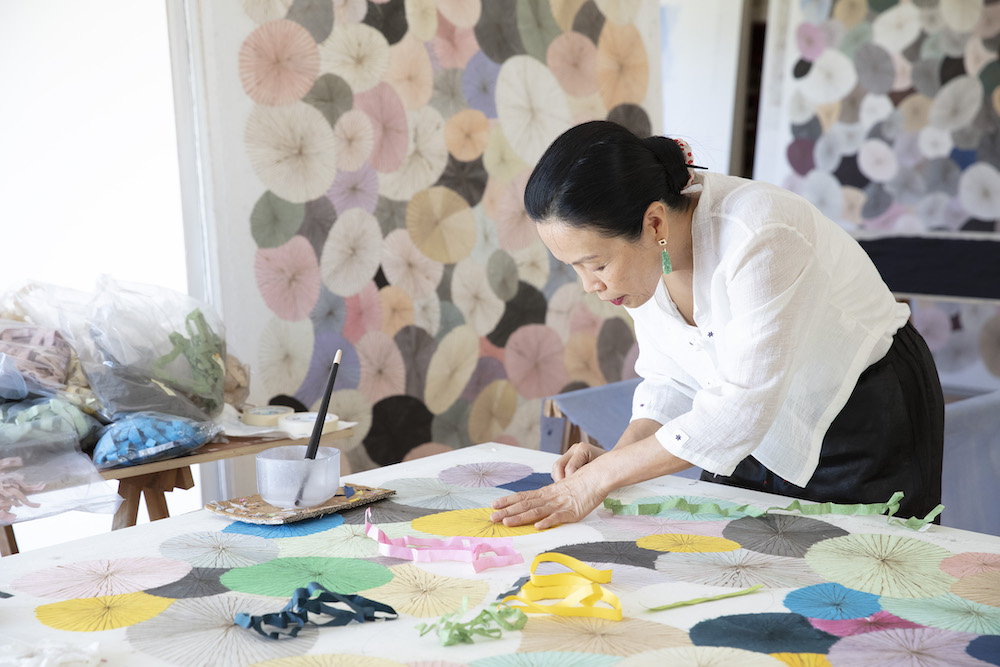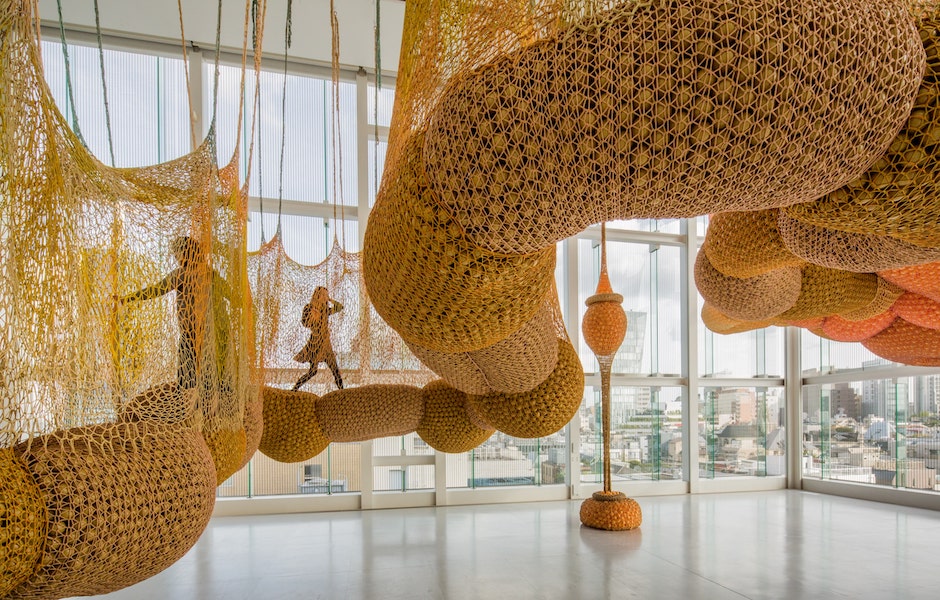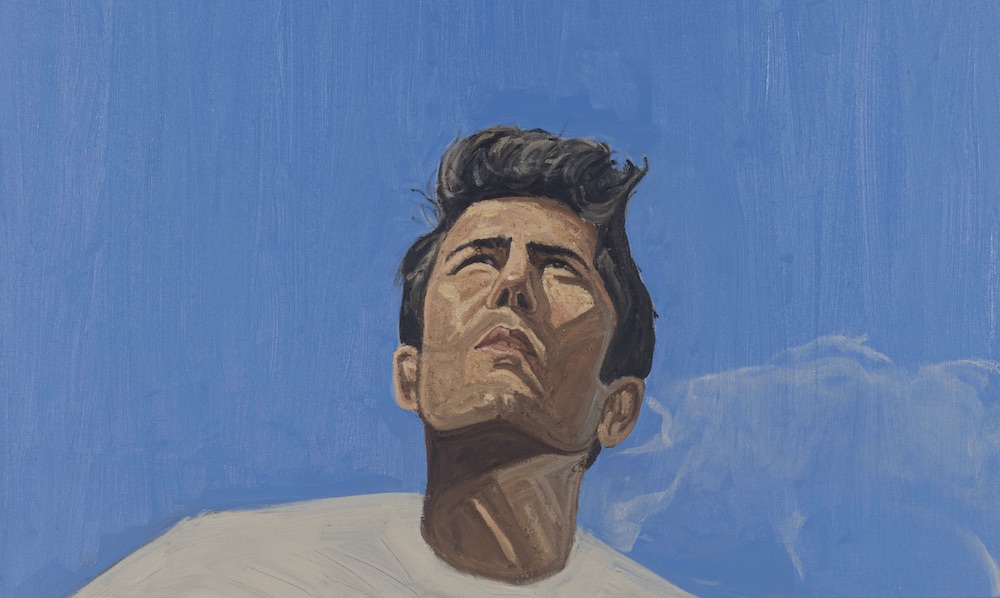Amy Sherald seeks out extraordinary people. Often that means approaching total strangers—very much outside the comfort zone of a self-described introvert—and asking them to participate in a portrait session. If they’re up for it, she’ll later invite them to the studio with wardrobe and color palette all planned out. And while she’s painted one of the most famous women in the world—First Lady Michelle Obama, thank you very much—her subjects are usually not so well-known. Extraordinary for her is something more innate, not always peppered with accolades and international recognition.
In April, Sherald participated in Lafayette 148 New York’s second annual “UnordinaryWomen” campaign benefiting Girl Rising. Joined by director of the Brooklyn Museum Anne Pasternak, art advisor Maria Brito, and other remarkable women, the digital initiative supports the nonprofit advocating globally for young women’s rights and education.
This spring, while the artist worked on creating a makeshift studio amid COVID-19 stay-at-home orders, Whitewall spoke with Sherald about her process, her love of reading, and putting her mark on the future visual history of black America.
WHITEWALL: Can you tell us about how you came to be involved in Lafayette 148 New York’s #L148UnordinaryWoman campaign?
AMY SHERALD: I was asked to be a part of the campaign. Once I found out about it and they shared that the collaboration was to raise money for Girl Rising, it was a no-brainer! I’m all-in on a mission that supports girls and women.
WW: Yes, Girl Rising is a nonprofit that advocates for girls’ rights and education around the world. What impact did education have on your role as an artist?
AS: Education had and continues to have a huge impact on my role as an artist. All great art starts somewhere, and for me it is always a book. The more words you have access to, the larger your vocabulary, and therefore the more expansive your vision. It empowers you to have a broader perspective of the world around you.
WW: Speaking of “unordinary,” The response to your portrait of First Lady Michelle Obama has been unordinary—critically, digitally, and in terms of attendance at the National Portrait Gallery. How did that impact what you wanted to do next?
AS: This was expected; however, it did not influence the direction I take in my studio practice. I was elated to see people excited and engaged in art and in art spaces that had no prior inclination to seek that kind of thing out. The portrait has become a beacon of hope and inspiration for many people. I’m just grateful that I had an opportunity to create something that carries with it such a beautiful legacy.
WW: You’ve said that in Baltimore it’s easy to find the extraordinary living among the ordinary. What makes a person extraordinary for you to want to invite them to be a subject in your painting?
AS: Some of us out there carry something special within us into the world. It doesn’t matter what your job is, nor level of education you have, or for that matter any of the accolades that would normally be a sign to those that have the privilege to sit for an artist and have their image rendered on a canvas. Some people are special without all of that! That is the kind of extraordinary person that I find in my subjects.
WW: What’s it like to approach someone you don’t know and ask them to be a subject in your work?
AS: I’m an introvert, so for me it’s always a little traumatizing to come out of my comfort zone and approach a stranger.
WW: Once they agree to it—what happens next?
AS: I get their information and contact them when I’m ready. Prior their arrival to the studio, I have a planning session regarding wardrobe and color palette. Once they arrive, we get to work, and that may mean a number of tweaks to what had been originally conceptualized. Bear in mind, this is an iterative practice.
WW: You’ve said that most of your inspiration comes from photography—and as a child, spending time going through family photographs. What captivated you then, and now with photographs?
AS: As a child, I was captivated by the photographs of family members that I had never known but saw myself. I found myself studying their eyes and trying to get to know them through these images. Presently, I’ve carried the exploration of that inner dialogue, which has led me to explore the sovereignty of such in my subjects.
WW: Can you tell us about the choice of clothes and background for your subjects? It often allows them to exist almost outside of one particular time.
AS: Clothes play an integral part of the painting after the eyes for me. I look for items that either tell a story or lead the viewer down a road of creating one for his or herself. I seek out a timeless aesthetic. Some can be inferred from my childhood; others have been downright fantastical.
WW: I wanted to ask about two works in your show “the heart of the matter” at Hauser and Wirth last year. Can you tell me about the inspiration and choice of setting for Precious jewels by the sea [2019] and If you surrendered to the air, you could ride it [2019]?
AS: These two pieces I have been waiting to give birth to for a few years now. I didn’t know what they would be, but I had been compelled to explore what the paintings could become outside of the singular. Much of the visual history of black America was not and has not been captured in paintings, but through photography. These kinds of images of quiet moments are ones that I wanted to see inserted into the art historical narrative. Americanness at its best.
WW: Can you tell us about your studio in Baltimore? What’s a typical day like for you there?
AS: I usually rise on the early side, walk the dog with my partner, and return to do a quick workout before I head to the studio. Once arriving, I like to ground myself by reading for 20 to 30 minutes. I usually commit to a chapter a day.
Once the painting commences, it doesn’t stop, so I try to get all things admin out of the way and make my first cup of black tea of many.
WW: What are you working on that the moment?
AS: Since I’m sheltering in place in Atlanta away from my studio, I’m trying to create a makeshift studio. I don’t often have the opportunity to work small or on paper. So I’m looking forward to seeing what happens as the process unfolds.










